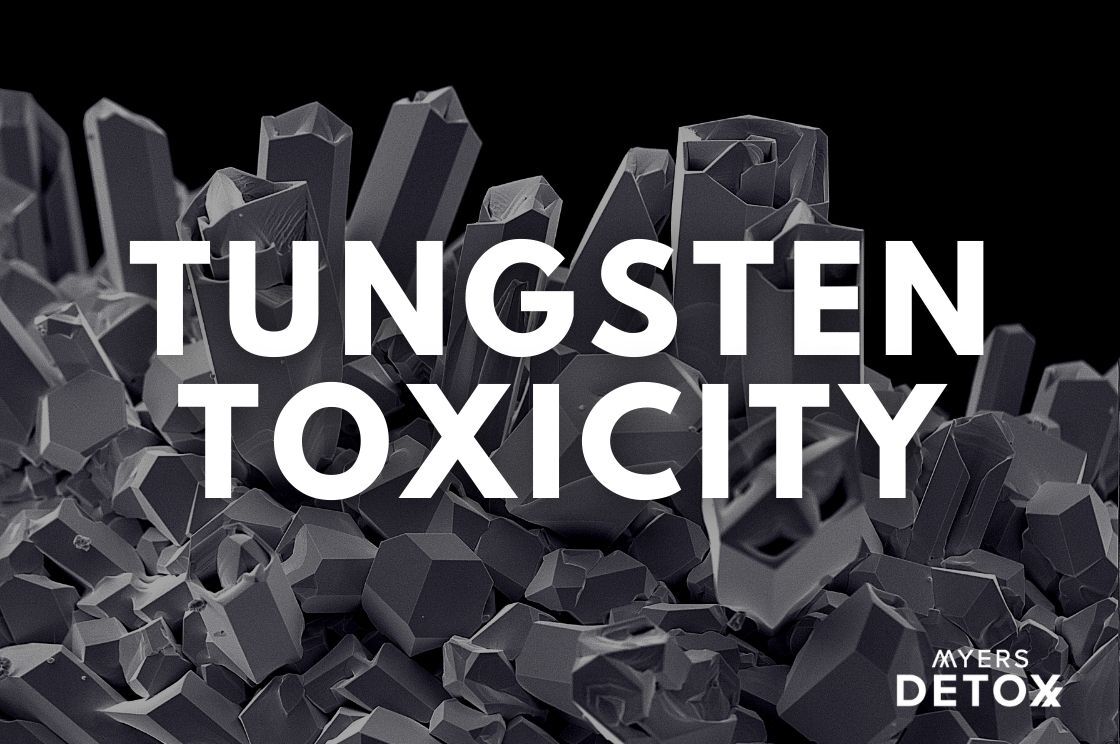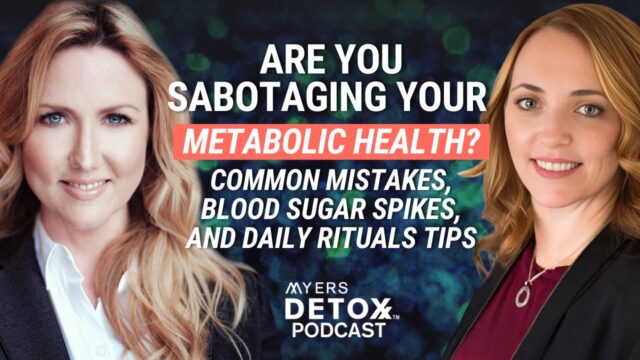I’m seeing Tungsten in more and more people’s hair mineral analysis and urine heavy metals test. I wanted to give you some info to understand about how to address this heavy metal if you have it on your test results.
Tungsten is a heavy metal that’s been under quite a bit of scrutiny in the last several years due to new understandings of how hazardous this element actually is.
Initially, tungsten was believed to be a safe alternative to lead and uranium, which are widely used in the military. In an effort to reduce lead and uranium exposure, the military turned to tungsten, which was thought to be much less of a toxic threat to those who worked with it. By replacing lead in ammunition, the military deemed their new tungsten-ladden ammo the “green bullet.”
Unfortunately, it turns out that tungsten isn’t as safe or immobile as once believed, and the increased use of this metal in the military and other industries has begun to contaminate our environment[1].
And it’s not just the usage of tungsten that’s an issue, but the mining process itself seems to carry a heavy toxic burden. For example, there were several cases of childhood leukemia that developed in Fallon, NV, which is right outside of a tungsten mining site. When investigators surveyed the area, they found that Fallon contained higher levels of tungsten in the air than neighboring towns, and the residents had higher levels of this metal in their urine[2].
This leads the U.S. Health and Human Services to report tungsten as “a contaminant of concern.” Which is, in my opinion, an understatement at best[3].
Let’s take a look at where tungsten comes from, some of the health hazards associated with this heavy metal, and what you can do to determine if you’ve been exposed to tungsten.
Sources of Tungsten
Tungsten is a naturally occurring heavy metal with one of the highest melting points, making it an excellent choice for high-heat applications. In nature, tungsten is found in rocks in minerals, always combined with other elements.
In addition to its widespread use in the military (including not only ammunitions but also missiles, helicopters, and more), tungsten is found in various everyday products and industries, including[4][5]:
- The wire in lamp bulbs
- The manufacturing of cutting and perforating tools
- Kinetic energy penetrators
- Counterweights
- Flywheels
- Radiation shields and X-ray targets, and screens
- Electronic devices
- Thermocouples
- Organic dyes and pigment phosphorus (as industrial chemicals)
- cathode-ray tubes
As the use of tungsten continues to increase, one of the clear downsides is the impact that this metal can have on our soil quality. As tungsten particles are released into the environment, it settles in our soil, disrupting the natural microbiology of the land and creating an acidic environment. This not only results in a substantial death of healthy bacteria in the soil but it triggers the growth of fungal biomass. As a result, both the plant and insect life in the soil are decimated[6].
Now, can you imagine what this means for our food supply? Plants readily absorb tungsten in the soil, and if we’re consuming those plants, that means that we’re getting a dose of tungsten ourselves.
Mining and emissions from industrial use of tungsten are also increasing the levels at which we find this metal in our air supply. Generally speaking, higher levels of tungsten are found in urban environments as opposed to rural settings. Regardless, if tungsten is high in the air, it will eventually settle into the soil and water, contaminating the area. Unfortunately, water is rarely tested for tungsten, so we have no way of knowing how toxic our local water sources actually are.
Of course, those with the greater risk of tungsten toxicity are people working directly with this metal, either in the military or industrial applications[7].
Symptoms of Tungsten Exposure
Symptoms of tungsten exposure will vary depending on the type and duration of your exposure.
Some examples include[8][9][10]:
- Irritation to the eyes
- Trouble breathing
- Loss of appetite
- Nausea
- Cough
- Memory issues
- Dermatitis
Possible Related Health Conditions
The accumulation of tungsten in your body may pose some serious health risks. As this metal is still relatively new in its industrial use, there have not been many studies conducted on its safety and potential risks. With that said, one potential mechanism by which tungsten can cause harm is due to its impact on phosphate, which plays an important role in various enzymatic reactions in your body (known as phosphorylation). It appears that tungsten can bind with phosphate, and therefore interrupt its cellular activity[11]. Furthermore, there are a handful of conditions that have already been identified as potentially stemming from tungsten exposure. These include:
Pulmonary Fibrosis (Hard Metal Lung Disease)
Hard metal lung disease (HMLD) is a progressive pulmonary fibrosis. This disease affects the tissues surrounding the air sacs in your lungs, known as alveoli. The exposure to toxins, such as tungsten, in HMLD, creates thick and stiff lung tissue, which makes it progressively more difficult to breathe.
HMLD is primarily seen in those that work directly with tungsten, as opposed to environmental exposure[12][13][14].
Lung Cancer
Due to the detrimental impact that tungsten can have on lung tissue, research suggests that heavy metal workers that are exposed to tungsten may display an increased risk for lung cancer[15].
Leukemia
As mentioned previously, the mining of tungsten may result in an increased risk of leukemia for those that live near the mining site. Although no firm conclusion was drawn in the Fallon, NV case, there is reason to believe that tungsten may have played a role in the increasing rates of childhood leukemia seen in this area[16][17].
Stroke
Research shows that individuals with higher urinary tungsten concentrations have double the odds of reported stroke. Although the exact link is unclear, investigators suggest that high levels of oxidative stress are likely to blame[18].
Developmental Abnormalities
In rat studies, exposure to high levels of tungsten caused musculoskeletal abnormalities and resulted in fetal death[10].
Have You Been Exposed To Tungsten?
The best way to assess whether you’ve been exposed to tungsten is through a Hair Tissue Mineral Analysis (HTMA).
Believe it or not, your hair is one of the most common places heavy metals like to hide. Through an HTMA, you’ll discover what minerals and metals are currently in your hair, which is a direct correlation with the metal content in your body.
HTMA is non-invasive and inexpensive, making it highly accessible for most people. And best of all, an HTMA can be done in the comfort of your own home. You simply snip a small portion of hair close to your scalp and then send it in for testing. Once your hair sample is processed, you can choose to set up a call with a trained practitioner to review the results and determine your next steps.
In addition to tungsten, your HTMA will also flag any other heavy metals high in your body, giving you a comprehensive look at what elements may need to be detoxed.
How to Support Your Body’s Natural Detox Mechanisms to Eliminate and Protect Against Tungsten
If your HTMA shows that you do have tungsten in your body, there are a couple of effective ways to mitigate your exposure and support your body’s natural detox abilities in regards to this metal.
The first is with the mineral molybdenum. Molybdenum is a part of several enzymes that are responsible for breaking down and detoxing unwanted compounds in your body, including heavy metals. By assisting in phase two detoxification, molybdenum supports your liver’s ability to neutralize toxic substances. For this reason, research suggests that molybdenum may be particularly helpful for encouraging your body to excrete impurities like tungsten[19].
Another tungsten detox supporter is DMSA (dimercaptosuccinic acid). DMSA is particularly effective at facilitating the body’s natural excretion of heavy metals from your kidneys, enhancing their excretion in your urine. As a chelating molecule, DMSA binds to heavy metals in your blood and then escorts them out of your body[20][21]. *
Takeaway
You likely won’t hear about tungsten toxicity as much as you do lead or mercury, but toxic levels of this metal are increasing in our environment, and at this time, I don’t see that changing. Since it’s still a relatively new concern, the research and data are sparse on the negative health consequences of tungsten, but given what we know about other heavy metals, it’s very likely that we will continue to hear about the detrimental impacts of this metal as time goes on. If you or someone you know currently works with or around tungsten, an HTMA is a crucial next step. There is plenty you can do to help support your body’s natural detox mechanisms when it comes to removing heavy metals, but first, you have to know what your current exposure levels are.









